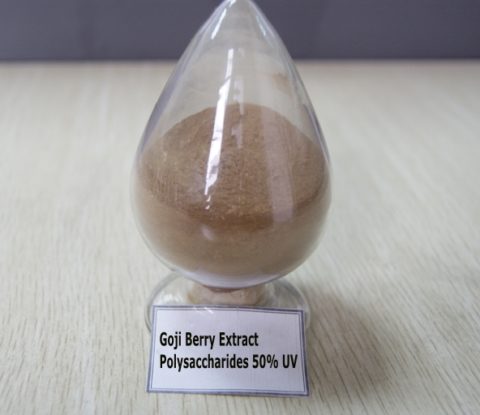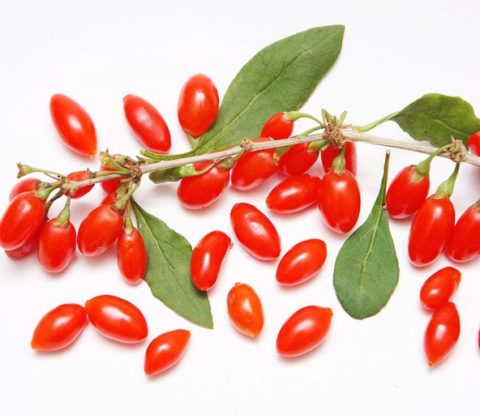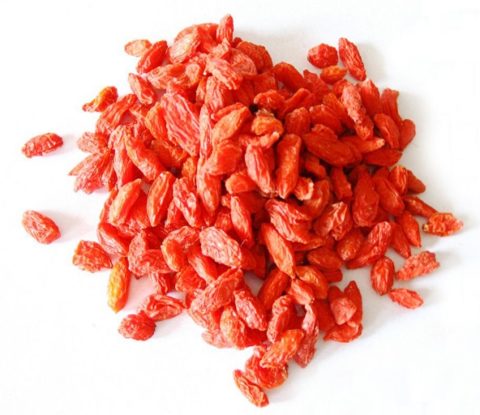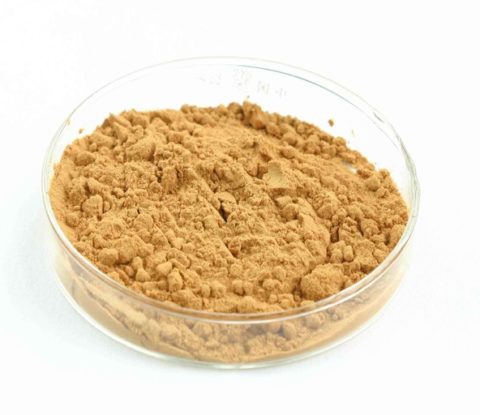
Goji Berry Extract
【Latin Name】: Lycium barbarum L.& Lycium Chinese Mill
【Other Names】: Wolfberry, go qi, Chinese wolfberry
【Part used】: Fruit
【Specification】: Polysaccharides 10% 30% 40%,50% UV,10:1,20:1 TLC
【Appearance】: Light yellow fine powder
【Extract method】: water
【Benefits】: Improve immunity and protect eyesight&liver
Goji Berry Introduction
The Lycium fruit, Goji berry, is very popular now as a health supplement, as it has been used for thousands of years in China. It is also known as Wolfberry fruit and Gou Qi Zi (in pinyin). In Traditional Chinese Medicine (TCM), Gou Qi Zi is classified as a Yin and Blood Tonic. Yin is generally the fluid aspect of the body. Specifically it is associated with the Liver and the Kidneys, and that is why it nourishes the eyes, because the eyes are associated with the Liver. The Goji berries nourish the Liver Yin and therefore keep the eyes moist and support healthy vision. The Kidneys are associated with the ears and the low back. Because the Goji berries nourish the Kidney Yin, they help with tinnitus and low back pain. Also because of their affiliation with the Kidneys, they play a significant role in longevity or as a sexual enhancement. The Kidneys and their role in the body are very highly revered in TCM. They are thought to be the foundation of our energy and life force. Gou Qi Zi nourishes the Kidney Yin and therefore enhances longevity;for when the Kidney Yin dries up, there is no more life.
Chemical Composition
Goji berry contain many nutrients and phytochemicals, including:
11 essential and 22 trace dietary minerals
18 amino acids
6 vitamins
8 polysaccharides and 6 monosaccharides
5 unsaturated fatty acids, including the essential fatty acids, linoleic acid and alpha-linolenic acid
beta-sitosterol and other phytosterols
5 carotenoids, including beta-carotene and zeaxanthin (below), lutein, lycopene and cryptoxanthin, a xanthophyll
numerous phenolic pigments (phenols) associated with antioxidant properties.
3 Major group composition
1). Polysaccharides are long-chain sugar molecules and are a distinguishing characteristic of goji berry. They are a primary source of dietary fiber in the intestinal system, and once they are metabolized polysaccharides:
-support and maintain the health of the colonic mucosal lining
-lower pH and reduce colon cancer risk
-enhance mineral uptake
-stabilize blood glucose levels
-stimulate the immune system
-offer antioxidant protection
2). Zeaxanthin, an antioxidant in the carotenoid family—a group of naturally occurring, fat-soluble pigments found in plants that play a key role in our immune system support—are abundantly found in goji berry. Zeaxanthin is a powerful vision protector that accumulates in the macula, the prominent, bright yellow spot in the center of the retina that allows you to clearly distinguish fine detail. The concentration of zeaxanthin in the center of the macula is about 85 times greater than its concentration in the periphery. Consequently, many researchers believe zeaxanthin (and lutein, another carotenoid) may be a potent protectant against macular degeneration 1-6, and may retard aging of the lens in preventing cataracts from forming.7,8 So, vision support is another one of goji berry’s many health benefits.
3. Beta-carotene is a carotenoid pigment in orange-red foods like goji berry, pumpkins,carrots, and salmon. It is important for the synthesis of vitamin A (a fat-solublenutrient and antioxidant that is essential for normal growth), vision, cell structure, bones and teeth, and healthy skin. Goji berry’s beta-carotene content is among the highest for edible plants.
Indications of Goji Berry in TCM(Traditional Chinese Medicine)
1. Various essence and blood deficiency syndromes
It is a key herb of blood tonifying and essence nourishing, because it can nourish kidney, supplement essence and nourish blood. For deficiency of blood and essence of liver and kidney, it is effective when applied singly, such as its alcoholic preparation which is named Gou Qi Jiu from Yin Shan Zheng Yao (Principles of Correct Diet); or it is combined with other blood and essence-nourishing herbs, for instance, it is used with Huang Jing in Er Jing Wan from Qi Xiao Liang Fang (Magic Effective Prescriptions). For soreness and limpness of lumbar and knees, and spermatorrhea due to deficiency of liver and kidney yang, it is combined with yin-nourishing and kidney-tonifying herbs. For instance, it is used with Tian Dong and Gan Di Huang in Gou Qi Wan from Gu Jin Lu Yan Fang (Ancient and Modern Effective Prescriptions). For soreness of lumbar, spermatorrhea, seminal emission, spontaneous sweating, night sweat, deafness blurred vision due to deficiency of kidney essence, it is combined with kidney-nourishing and essence-supplementing herbs. For instance, it is used with Shu Di Huang, Gui Jia Jiao and Shan Zhu Yu in Zuo Gui Wan from Jing Yue Quan Shu. For insomnia, dream-disturbed sleep, and sallow complexion due to blood deficiency, it is combined with blood-nourishing and tranquilizing herbs, for instance, it is used with Long Yan Rou in Qi Yuan Gao from She Sheng Mi Pou.
2. Blurred vision due to liver and kidney deficiency
It can tonify liver and kidney, and is skilled in improving vision. It is a commonly used herb for blurred vision and short sight due to liver and kidney deficiency, it is combined with liver and kidney-tonifying and vision-improving herbs. For instance, it is used with Ju Hua, Shu Di Huang and Shan Zhu Yu in the formula Qi Ju Di Huang Wan from Yi Ji.
Modern Researches on Goji Berry
1. Goji berry supports cardiovascular health
In the book Discovery of the Ultimate Superfood, the authors document the science behind goji berry and list 67 medical studies showing how goji berry supports healthy heart function. A Taiwanese study of the antioxidant activity of goji berry and two other Chinese herbs found goji berry to be the strongest inhibitor of lipid peroxidation (a major factor in cardiovascular disease) in animal models.
2. Reduces blood glucose and lipids in animal models
After three weeks of eating a diet supplemented with goji berry, laboratory animals with non-insulin dependent diabetes II showed a significant decrease in weight, cholesterol,triglycerides, and insulin levels, leading the researchers to conclude that goji berry may be helpful in improving insulin resistance.Another study found that goji berry contains potent antioxidants that reduced blood glucose levels, and total cholesterol and triglyceride concentrations in rabbits, while increasing high density lipoprotein cholesterol (HDL)—“good cholesterol” levels after 10 days of treatment.
3. Increases immunity
In a 1988 report published by the State Scientific and Technological Commission of China, researchers discovered that after eating 50 grams of goji berry, human volunteers showed an increase in white blood cell count and a 75 percent increase in the antibodyimmunoglobulin A (lgA). In a more recent animal study, goji berry polysaccharides stimulated production of interleukin-2, a hormone-like substance that stimulates the growth of blood cells important to the immune system, which protect against cancer cells and microbial invasion.
4. Supports brain health
Alzheimer’s disease is predicted to become an epidemic for Baby Boomers, and there are currently about 70,000 scientists working around the world to find a cure. In a recent study at the University of Hong Kong, researchers theorized that since goji berry extract has anti-aging effects, it probably also has neuroprotective effects against toxins in neurodegenerative diseases, namely Alzheimer’s disease. They were right. Goji berry extract protected the brain neurons of laboratory animals from the toxic effects of beta amyloid protein—a culprit in Alzheimer’s disease. The researchers concluded that studies on anti-aging herbal medicine like goji berry might open up a new therapeutic window for the prevention of Alzheimer’s disease.
5. Protects the liver
Goji berry is a potent hepatoprotective, or liver protector:
-One study discovered that goji berry helps counteract carbon tetrachloride toxicity in the liver.
– A goji berry compound called cerebrosides—a combination of sugar and fat (glycolipids)—was shown to protect liver cells from a toxic dry-cleaning chemical better than the well-known liver protectant milk thistle.
-Pyroles, another hepatoprotective compound in goji berry, are unusual molecules that have a nitrogen atom in their central ring and were found to outperform goji berry cerebrosides in protecting the liver.








